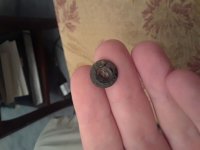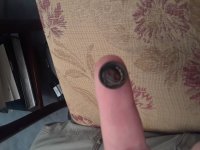EnvoyToTheMolePeople
Sr. Member
- Oct 1, 2018
- 434
- 667
- Detector(s) used
- Garrett AT Max
- Primary Interest:
- All Treasure Hunting
I found this small brass button on a rock pile in New Jersey. It seems to say "Milborne Yeovil" with a little six-pointed star. The button has some kind of black coating. Does anybody know what this means. According to google, they are both towns in England, but I d3on't know if that is relevant at all.







